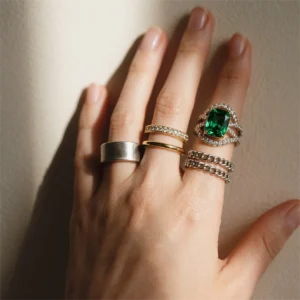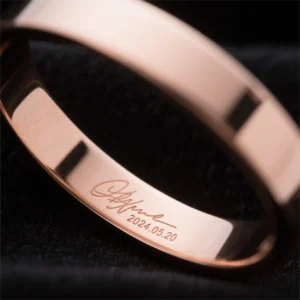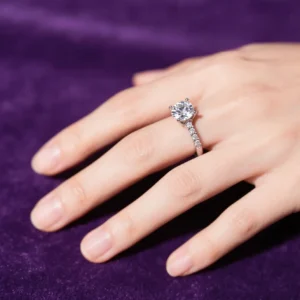In the realm of jewelry, where aesthetics blend seamlessly with durability, the allure of silver necklaces is unparalleled. However, the natural beauty of silver can be marred over time by tarnish, a result of its chemical reaction with sulfur and oxygen in the air. This is where anti-tarnish technology comes into play, preserving the radiance of your silver treasures.
What is Anti-Tarnish Technology?
Anti-tarnish technology applies a protective layer to silver surfaces, blocking sulfur, oxygen, and moisture—the primary causes of oxidation and discoloration. This innovation extends a necklace’s lifespan while maintaining its original luster, making it a must-have for modern jewelry lines.
Types of Anti-Tarnish Coatings
E-Coating (Electrophoretic Coating)
A prevalent method in anti-tarnish treatment, e-coating employs an electrolytic process to deposit an ultra-thin, transparent polymeric layer onto the silver surface. This layer effectively acts as a barrier, isolating harmful substances in the air, mainly sulfur.
Spray Coating
As its name suggests, this type of coating is applied through spraying, offering additional protection to the silver. It adheres to the surface, forming a resilient shield against tarnishing.
Wax Sealing
By coating the silver with wax, a physical barrier is created that significantly slows down the oxidation process. This traditional method remains a reliable choice for preserving silver’s shine.
The Impact of Anti-Tarnish Coatings
Anti-tarnish coatings significantly bolster the longevity of silver jewelry, minimizing discoloration due to oxidation and sulfidation. Recognizing the importance of maintaining silver jewelry’s gleam, numerous jewelers incorporate anti-tarnish coatings into their production processes. These coatings have been shown to enhance the durability of silver accessories and reduce the need for frequent cleaning and maintenance, delighting consumers worldwide.
Care Tips for Sterling Silver Storage
Avoid Chemical Exposure
Keep your silver jewelry away from substances like perfumes, cosmetics, and shampoos, as they can accelerate tarnishing.
Gently Cleaning
Gently wipe your silver necklace with a soft cloth to remove dirt and oxides, restoring its natural shine.
Proper Storage
Store your silver jewelry in a cool, dry place, avoiding contact with rubber bands, certain papers, or cards that may contain chemicals that could cause tarnishing.
Incorporating anti-tarnish technology into your silver necklace line is a strategic move that underscores your commitment to quality and customer satisfaction. By adopting this advanced preservation method and educating your clientele on simple maintenance practices, you guarantee that each piece will retain its radiant glow, preserving its timeless elegance for years to come.





